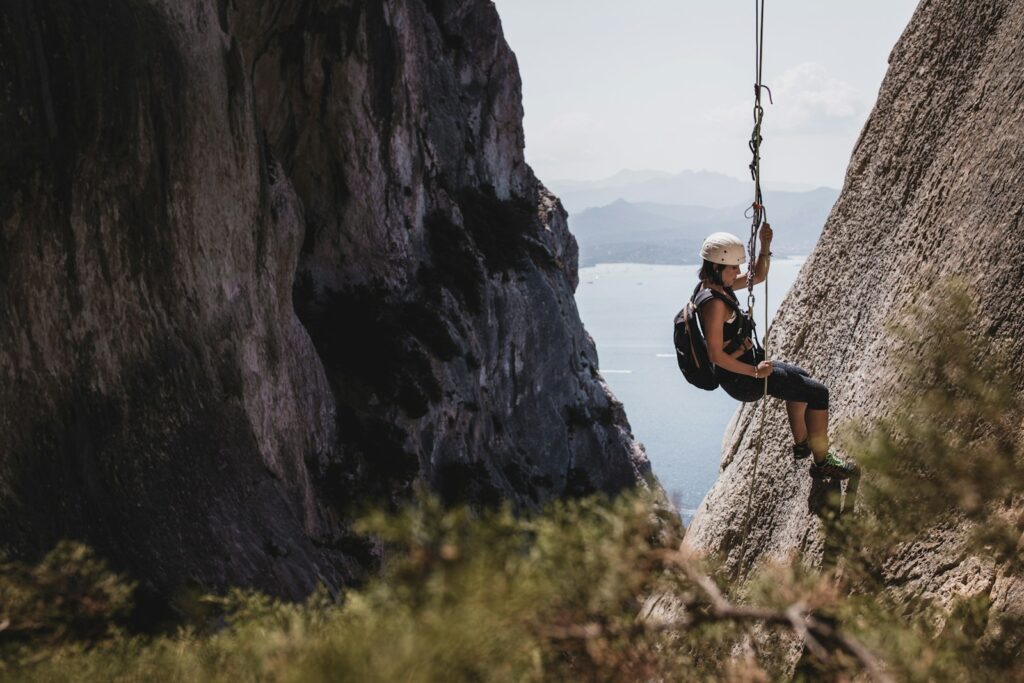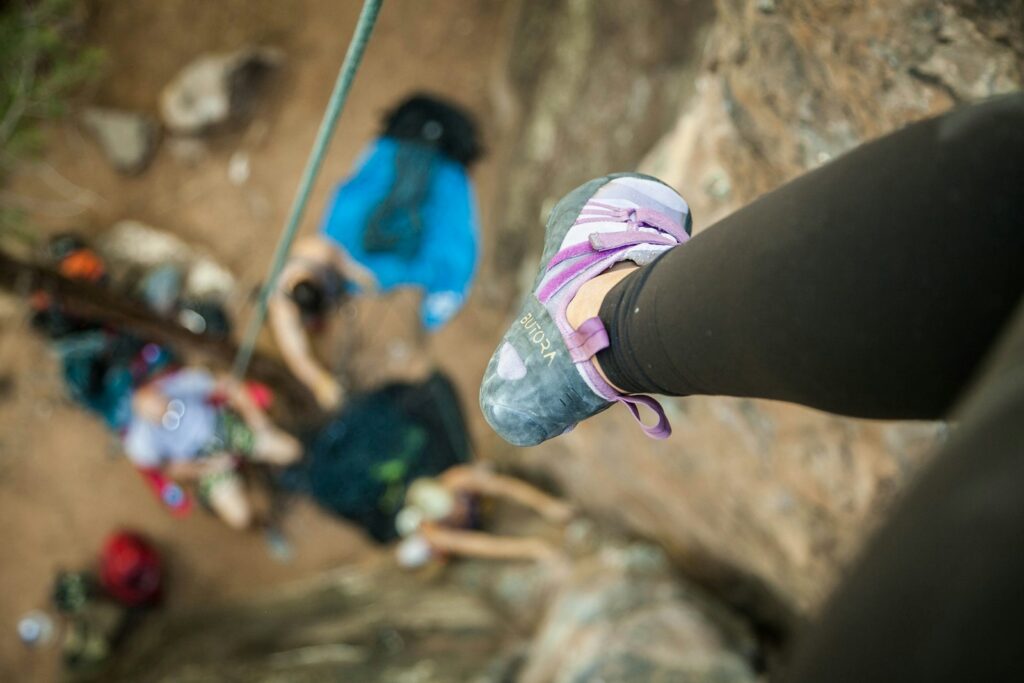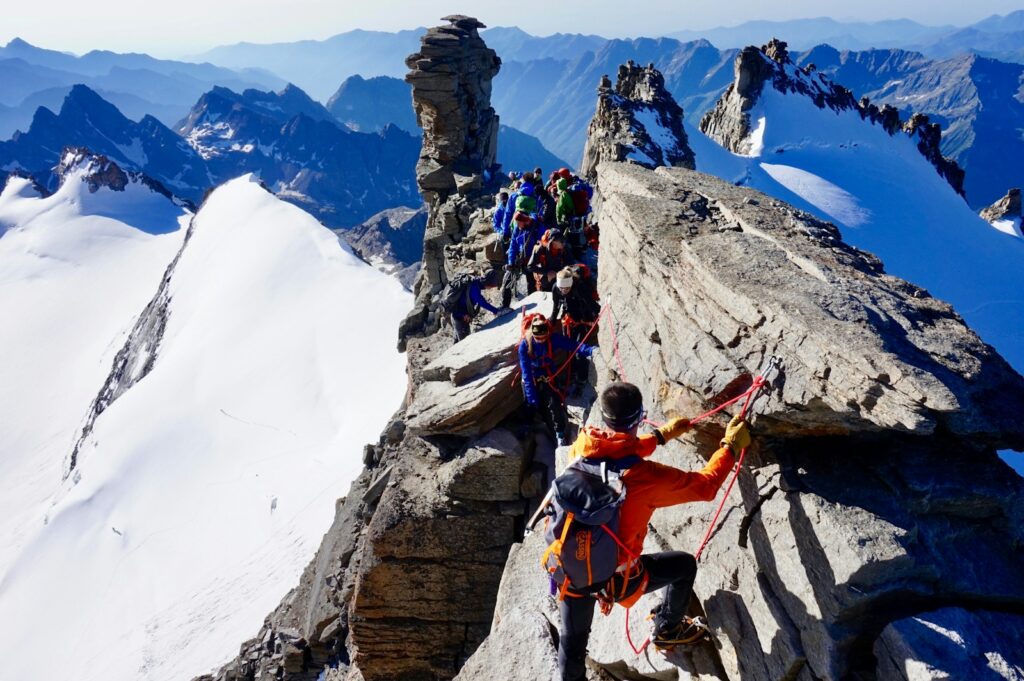Stepping from the climbing gym onto real rock marks an exhilarating milestone in any climber’s journey. The textured surfaces, natural challenges, and open-air experience create memories that last a lifetime. However, this transition requires more than just enthusiasm—it demands the right equipment to ensure both safety and enjoyment. Unlike indoor climbing with its controlled environment and readily available rental gear, outdoor climbing necessitates personal ownership of properly fitted, reliable equipment.
This guide will walk you through essential gear considerations for your first outdoor climbing adventure, helping you make informed decisions without overwhelming your budget or backpack.
Understanding the Basics: Sport vs. Trad Climbing

Before purchasing any equipment, it’s crucial to understand what type of climbing you’ll be doing. Sport climbing routes feature permanent bolts drilled into the rock, requiring less gear but specialized knowledge about clipping and falling safely. Traditional (trad) climbing involves placing removable protection in natural rock features, demanding more equipment and technical expertise. Most beginners start with sport climbing due to its lower barrier to entry and gear requirements.
Sport routes are typically well-documented in guidebooks with established difficulty ratings, making them more accessible for newcomers to the outdoor climbing scene. Understanding these differences will significantly impact your initial gear purchases and learning curve.
The Climbing Helmet: Non-Negotiable Protection

While helmets might be optional in many indoor gyms, they become essential safety equipment outdoors where falling rocks, unexpected falls, and exposed terrain create additional hazards. Modern climbing helmets balance protection with comfort, using lightweight materials that won’t distract from your climbing experience. Look for models certified by UIAA or CE standards, ensuring they meet international safety requirements for impact protection. Proper fit is critical—your helmet should sit snugly without rocking, with the chinstrap secure enough to prevent shifting during falls or movements.
Many experienced climbers consider helmets the single most important piece of safety equipment for outdoor climbing environments.
Choosing Your First Climbing Harness

Your harness literally keeps you connected to the safety system, making this purchase particularly important. Outdoor-specific harnesses typically feature more durable materials and additional gear loops compared to gym models. When trying harnesses, wear clothes similar to what you’ll climb in and hang in the harness to test comfort—you might spend considerable time suspended during belaying or working through difficult sections. Ensure the waistbelt sits above your hip bones, leg loops don’t restrict movement, and all buckles operate smoothly.
The best harness balances comfort, functionality, and durability rather than simply being the lightest or most feature-packed option available. Remember that proper fit trumps brand name or price point every time.
Climbing Shoes: Finding the Right Balance

Outdoor climbing introduces various rock types and longer routes, potentially changing your shoe requirements from gym climbing. For beginners, prioritize comfort over extreme performance, selecting shoes you can wear for extended periods without debilitating pain. All-around shoes with moderate downturn and medium stiffness provide versatility across different terrain types. Leather shoes will stretch more than synthetic options, something to consider when determining size. Rubber quality significantly impacts performance and durability—brands like Vibram XS Edge, Stealth C4, and Trax are respected for their grip and longevity.
Consider having your first outdoor shoes fitted professionally, as proper sizing balances necessary sensitivity with tolerable comfort.
The Right Rope: Your Lifeline

Your climbing rope represents both your most critical safety component and likely your most significant initial investment. For beginners, a dynamic single rope in the 9.8-10.1mm diameter range offers an ideal balance of durability and handling. Rope length depends on your local climbing areas—60m suffices for many locations, but research whether your intended crags require 70m or even 80m ropes. Consider dry-treated ropes if you’ll climb in wet conditions, as water can significantly reduce rope strength and increase weight.
Middle marks or bi-pattern designs help identify the rope’s center, crucial for safe rappelling and route management. Proper rope care starts immediately—store it on a tarp or rope bag, avoid stepping on it, and inspect it regularly for damage.
Belay Devices and Carabiners

Modern belay devices fall into two main categories: tube-style devices (like the Black Diamond ATC) and assisted-braking devices (like the Petzl GriGri). While tube devices cost less and handle double-rope techniques, assisted-braking options provide an additional safety margin that many beginners appreciate. Regardless of type, learning proper belay technique remains essential—no device replaces good training. You’ll need locking carabiners for belaying and anchoring, with at least two HMS/pear-shaped carabiners for belay connections.
Non-locking carabiners serve various purposes including racking quickdraws and organizing gear. Quality matters with carabiners—look for smooth gate action, appropriate strength ratings, and designs that minimize the chance of cross-loading.
Quickdraws: Essential for Sport Climbing

For sport climbing, quickdraws connect your rope to the bolts protecting the route. A starter set of 12 quickdraws suits most beginner routes, though having a few extras prevents disappointment at longer crags. Standard quickdraws feature two carabiners connected by a sewn sling—one carabiner clips to the bolt, while the other holds your rope. Some designs include a straight-gate carabiner for the bolt end and a bent-gate for easier rope clipping. Quickdraw length affects rope drag and movement—shorter draws (10-12cm) work well on straight routes, while longer options (17-25cm) help reduce friction on wandering paths.
Quality draws represent a worthwhile investment as they’ll likely see years of use across countless climbing adventures.
Clothing and Environmental Protection

Outdoor climbing exposes you to natural elements absent in gym environments, requiring appropriate clothing and protection. Durable pants or shorts resist abrasion against rough rock surfaces while maintaining mobility. Layering systems accommodate temperature changes that occur throughout the day or at different elevations. Sun protection becomes critical—bring sunscreen, sunglasses, and perhaps a lightweight sun hoody for exposed areas. A beanie and light gloves help on cooler days, while a rain jacket provides essential protection if weather turns unexpectedly.
Many experienced climbers recommend pants with reinforced knees and seats, acknowledging the constant contact with abrasive surfaces that quickly destroys regular athletic wear.
The Climbing Chalk Bag and Chalk

While seemingly minor compared to safety equipment, proper chalk systems significantly impact climbing performance and comfort. Belt-style chalk bags provide continuous access to chalk while climbing, with designs ranging from minimalist to feature-heavy options with brush holders and zippered pockets. For longer routes, consider a chalk bucket for generous application before starting. Experiment with different chalk types—loose chalk, chalk balls, and liquid chalk each offer distinct advantages in different conditions. Magnesium carbonate (climbing chalk) works by absorbing moisture from your hands, improving grip on small holds and slick surfaces.
For environmentally sensitive areas, consider using eco-friendly chalk alternatives that reduce visual impact on rock faces.
Approach Shoes: Getting to the Wall

Unlike gym climbing with its convenient access, outdoor crags often require hiking across varied terrain to reach climbing areas. Purpose-designed approach shoes combine hiking support with climbing-specific features like sticky rubber toe caps and soles for scrambling across rocky terrain. The ideal approach shoe balances comfort for longer hikes with technical performance for challenging access routes. Features to consider include waterproofing for wet conditions, durability for rough terrain, and compatibility with your climbing style and local geography.
Some climbers prefer lightweight trail runners for distant but well-maintained approaches, while others need more robust footwear for technical mountain terrain. Quality approach shoes represent an often-overlooked but crucial component of the outdoor climbing experience.
The Climbing Backpack

Transporting your gear to outdoor sites requires a suitable backpack designed for climbing’s unique demands. Climbing-specific packs typically feature reinforced haul loops, streamlined designs to avoid snagging, and specialized carrying systems for rope and equipment. Volume requirements depend on trip length and gear quantity—30-40 liters suits most day climbing, while multi-pitch adventures might require 45+ liters. Look for durable materials, comfortable carrying systems, and thoughtful organization features like rope tarps or helmet attachments.
Some packs include compression straps that allow them to shrink for actual climbing if you’ll wear your pack on routes. External attachment points for helmets, shoes, or quickdraws enhance versatility for approaches and returns.
Budgeting and Prioritizing Your Purchases

Assembling a complete outdoor climbing kit represents a significant investment, making strategic purchasing decisions important. Safety equipment including helmet, harness, rope, and belay device should never face compromise—these items directly protect your life and warrant purchasing the best you can reasonably afford. Consider renting specialized equipment for initial outings while purchasing personal safety gear. Many climbers build their kit gradually, starting with essentials and adding specialized items as their experience grows.
The climbing community often features active secondhand markets where quality used gear (except for ropes, helmets, and soft goods that show wear) can provide significant savings. Remember that proper training in using your equipment matters more than having the newest or most expensive versions available.
Climbing Partners and Community Resources

Perhaps your most valuable resource isn’t gear at all, but the knowledge and support of experienced climbing partners. Connecting with established outdoor climbers provides insights no gear guide can offer, including location-specific recommendations and hands-on instruction. Local climbing organizations, gym bulletin boards, and climbing apps help locate compatible partners with outdoor experience. Consider hiring a guide for your first few outdoor sessions—professional instruction ensures proper technique while potentially saving money on unnecessary purchases.
Many climbing communities organize mentorship programs specifically designed to help gym climbers transition safely to outdoor environments. This human connection not only enhances safety but enriches the entire climbing experience through shared knowledge and camaraderie.
Conclusion

Transitioning from indoor to outdoor climbing opens a world of adventure, challenge, and natural beauty that keeps climbers passionate for decades. While the initial gear investment might seem daunting, thoughtful purchases of quality equipment create a foundation for years of safe climbing experiences. Remember that your first outdoor kit doesn’t need to be comprehensive—focus on essential safety items, learn proper use through qualified instruction, and gradually expand your equipment as your climbing evolves. The rock has existed for millions of years and will patiently wait while you assemble the right gear for your unique climbing journey.
With proper preparation, your first outdoor climbing experience can mark the beginning of a lifelong connection to rock, nature, and the remarkable community of climbers who share this powerful passion.

